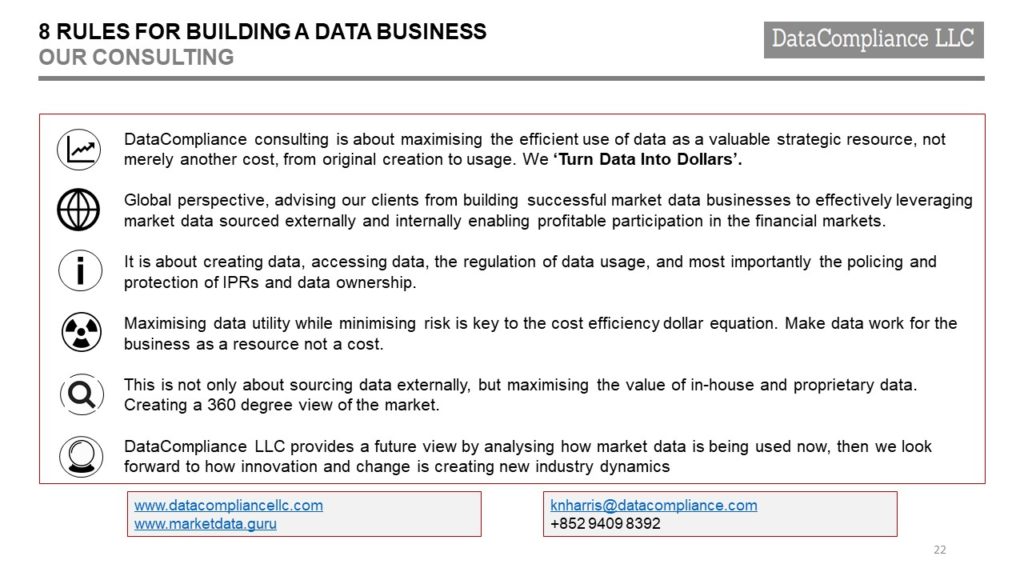Rule 4 Objective: Know which clients and markets have a need for the data, the purposes to which it will be used to provide the foundation for the business model
Why? Knowing who the clients are is just the start, it is understanding how the consumers use the data that maximises revenue. To capture market share, like the Ceryneain Hind, does not require rocket science more the application of common sense. The assumption that just because a business has data someone will ‘buy’ it is not just plain wrong, but sadly a prevalent notion. Someone trading China Coal is unlikely to buy Spanish equity data, but will be interested in commodity indices. The first step is to get to know your market, the second is carry on knowing it, because the market never stays still. Fundamental is data’s infinite elasticity, being able to perform multiple tasks simultaneously, i.e. ‘The Snickers Effect’
The Key factors are:
• Knowing who the clients are creates the business strategy
• Knowing how the clients will use the data provides the foundation for the pricing model
• Business strategy + pricing models = sales
• No two clients are alike, but they tend to share characteristics in data usage if not data requirements
• Financial institutions strive to reduce costs, but are being forced into consuming more data
• This means financial institutions are becoming more discriminating about their data sourcing
• End users constantly find new ways to put data to use meaning sources and distributors play eternal catch up
• The marketplace is both in a state of evolution and revolution
• Flexibility and intelligence is required
The 4 core areas are:
 Rule 4 Future Development
Rule 4 Future Development
The market waits for no man. Research can provide you with a snapshot of where the market is right now, backed by analysis predicting where it might be going, yet there is no guarantee about the outcome, and there is never one single outcome because time never stops moving forward. Metrics relating to ongoing data usage, changes in trends and the reasons for these changes are an absolute necessity, combined with developing close relationships with the users themselves as well as the managers responsible for data.
How?
• Create direct relationships, this is mutually beneficial for sharing of knowledge and intelligence
• Long distance relationships do not work, because it leads to a misunderstanding of changing market dynamics, the misapplication of data, which inevitably reduces revenue opportunities
• Discover who needs/uses which datasets and why, what are their businesses?
• Understand how they use the data, for instance, is it for trading (trading engines, risk, analytics), reporting (portfolio management, capital adequacy), and all the other purposes data can be tasked for
• Are your clients turning the data into revenue generating opportunities for themselves, such as indices, financial products, data processing, and onward sales?
• Know where the data consumers are
• Do not be afraid to leverage the expertise and experience of third parties, good consultants will repay the investment many times over (yes I have a vested interest here, but the point is valid, top class independent consultants will more often deliver better results than marque brands)
Getting Rule 4 right gets your data to the people who need it most (and will pay)
Rules 5 to 8 to come!
Keiren Harris 16/03/2021
www.datacompliancellc.com
Please email knharris@marketdata.guru for a pdf or information about out consulting services


